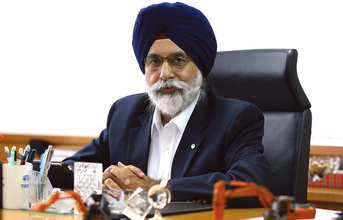
The third aspect is making machines available as per the requirement of the market. "Again on that front, we have done quite well as the market grew suddenly in the last two years. It took many people by surprise but we were very well equipped. So I think all these factors have helped us maintain our market position," he says with a smile of satisfaction.
Addressing India's Growth story
Singh is happy to note that Tata Hitachi products have direct relevance to India's growth story. "The market is divided into different segments. It includes road construction, which is the biggest segment for us, and then we have mining, irrigation as well as housing. These are the key industry drivers. Besides these segments, we also have ports and railways that present good opportunities for us. Our approach is to understand these segments and provide the right solutions to the customers. We understand that each segment and each customer has a specific machine requirement and that's what we provide. We understand the customer's job and facilitate the customer to complete the job in a faster and more efficient manner. And that is working very well for us," Singh adds.
The legacy and range
Singh also underlines the legacy of Hitachi when it comes to the product. He notes that today, Hitachi products are sold globally. "Most of our products in India have the same technology that
we have in other parts of the world." In India, to cater to different jobs and different segments, Tata Hitachi has two categories of machines - EX Range and GI Range. While EX caters to the economy range of the market, GI caters to the premium side. "The GI Range is more advanced and it has more of IT features - we call it ConSite. With ConSite, the customer, seating at his home or office remains connected with his machine and is updated about predictive maintenance, predictive health check, machine performance, operator efficiency, tool efficiency and so on. However, the Tata Hitachi quality remains the same irrespective of whether it is an EX machine or a GI Machine. The differentiation is in terms of the features," Singh notes.
(Continiued on next page)


























